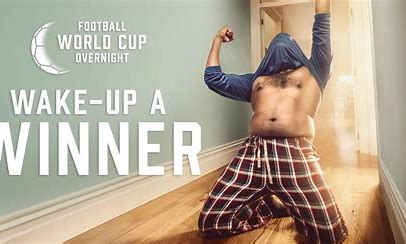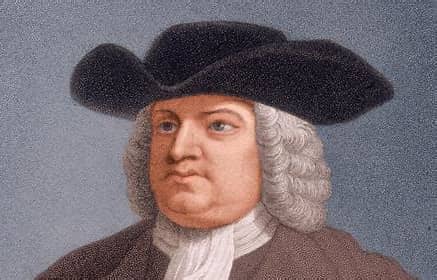Could something as simple as switching from Tylenol to Advil be the temporary solution for my sciatica pain? For two out of three days since making the change, I’ve been able to maneuver relatively comfortably with the dogs in the morning. I also haven’t gone directly from bed to the freezer for an icepack. Now granted, other changes have been made in my routine, like keeping my left leg straight in bed rather than curling into a ball and staying off soft cushioned stairs to provide more lower back support. The combination seems to be working. This morning, I will deliver a disc with my MRI results to the chiropractor, while my physician supposedly received them directly over the weekend. They will both analyze the results and prescribe treatment in the next few days.
I’ll continue to do my fitness center routine, that has also been modified over the weekend to include mile-long walks back to the house from the workout. In the past, the walks have been longer, up to two miles, but with the support of treadmill rails or the dog buggy, relieving pressure off my back. The problem seems to stem from the base of my spine and then along my left side, moving from upper thigh to calf to toes. There’s obviously a pinched nerve somewhere!
The other hassle I’ve been dealing with this weekend is the timer on my landscaping lights. I’ve had a repairman out on several occasions. We replaced lights and made adjustments, but the timer clock that’s set to turn on the lights at dusk gets stuck at midnight, so they never shut off. Before I have him install a costly new timer, I’ve reset the system this morning to shut-off just before midnight to see if that helps resolve the issue. It’s always something!
We loaded up on Costco items this weekend to earn a $50 savings card. The new store is just down the street. As a result, there’s now enough shampoo in the house to last until at least 2017. It was simply a matter of spending money to make money. I also shampooed our outdoor furniture over the last few days because of all the construction dirt from the addition behind us. This project ensued because both dogs were having diarrhea, so I had to haul out the carpet/upholstery cleaner to handle both issues.
We even had a hassle for “Date Night” this week, stopping at three different restaurants before we found one open or willing to serve us. We ended up at the Lighthouse Grill on Lemon Bay and enjoyed a beautiful sunset and some BBQ, so it all worked out. The night before we dined at Dockside with friends. We then finished Season 1 of Bad Sisters, while I watched football and baseball the rest of the weekend.
Today, I need to stop by Eyeglass World for the fourth time to resolve my on-going prescription hassle, and then create a new hassle by setting an appointment at Xfinity to upgrade my phone. I also have to do a late night pick-up of my son from the St. Pete/Clearwater Airport, so I hope his flight goes smoothly. All in all, retirement life does not run exactly like clockwork!
Between baseball cards and big games my life seems to revolve around sports. I check the scores every morning, look at all the box scores, go to the Topps Now site every afternoon to see what cards are available, and watch the live action whenever I can, then view a related documentary or read a book like Bushville Wins! about the 1957 World Champion Milwaukee Braves. IU sports, Purdue, other BIG Ten teams, Indiana Fever, the Cubs, White Sox, Colts, Bears, Kyle Schwarber, and Shohei Ohtani are currently my regular interests.
The baseball playoff race is in full swing, IU football is off to an unprecedented start, IU basketball is getting ready to start, and history is being made by Schwarber and Ohtani on the diamond. Sadly, the Cubs will fall short again this year, and the White Sox are a joke, about to lose their 120th game this season – more history of the worst kind!
Hoosier football won their first four games in dominating style, the local Venice High School Indians are 5-0 after a 54-51 victory last night over Cocoa. The WNBA Indiana Fever and rookie sensation Caitlin Clark are solidly in the playoffs and will battle the Connecticut Sun today on ABC-TV. At least, my sports interests are diverse, ranging from high school and college to professional. I follow the Portland Timbers in soccer as well as the IU program, watch the Little League World Series, men’s & women’s softball, Indy Car, NASCAR, and Formula One. If competition and skill or a ball are involved – I’m interested.
The Purdue-IU rivalry has finally taken a twist in football this year, as the Boilermakers look weak. Hopefully that trend will continue in men’s & women’s basketball, as well as the other sports. Purdue is my second favorite team, the result of working in that community for several years, but there’s no doubt as to my favorite when they play IU. The Colts and Bears tangle this afternoon.
My interest in Kyle Schwarber stems from his collegiate years at IU, my alma mater as well. He made history again last night with his 15th lead-off home run for the Phillies this season. No one else in baseball has ever accomplished that feat! He did it against the Met’s pitcher, Sean Manaea, who now boasts a 12-5 record and retired 21-24 batters with only three hits, including Schwarber’s 406-foot bomb. Manaea’s pitching gem, however, temporarily stalled the Phillies claim to the Division title.
Shohei Ohtani immediately intrigued my interest when he moved his skills from the Japanese leagues to MLB in 2018. This despite my being neither an Angels or Dodgers fan. The ability to both pitch and hit effectively is a rare art, dating back to Babe Ruth. I started collecting his baseball cards, as I also do with Schwarber, and have been caught-up in his success. After arm surgery late last year, he’s focused on hitting and base stealing this season, reaching the 52-52 plateau the other night with 7 more games yet to play. He could very well get back on the mound in the playoffs, finally on a team that has gotten him into the MLB postseason for the very first time.
Needless to say, I’m looking forward to the next game!
I just happened to tune into the MLB Network last night to watch part of Shohei Ohtani’s amazing historic performance. He went 6-6, with 10 RBIs, 2 steals, 2 doubles, 3 HRs, and 4 runs scored, becoming the first player to achieve membership in the 50/50 Club. Yes, other players have had more HRs or steals, but no one in all of baseball has done what he has done this season – and it’s not over. Although his Dodger team clinched their twelfth-straight playoff berth, he will have played 874 games without going to the postseason, once these last 9-games are in the books.
The Japanese superstar still hides behind his interpreter, although I think that he’s probably somewhat well-versed by now in English. He’d have to do too much talking to the press if it weren’t for this crutch. It’s a defense mechanism that has even protected him from gambling accusations. I also expect that he’ll be back on the mound before the playoffs are over, adding to his baseball mystique. Surgery has allowed him to focus on hitting and stealing bases that has not been a luxury in previous seasons as a two-way player.
I’m not a Dodger fan but I am intrigued with Shoei himself. I’ve been collecting his baseball cards since the 2018 Rookie season that brought him to the Angels and saw him play in Anaheim that year. If he had remained with the Angels this year, he would have missed this playoff opportunity with the rival Dodgers. Who can now blame him for the move? His collection of over 150-cards, and growing, is on display at my local baseball card shop, Blue Breaks. The limited-edition Topps Now cards chronologically summarize his MLB career. Hopefully, this 50/50 achievement adds to its investment value.
I went to find an image for this post for “Sub-200” and it came up with a bunch of pictures of machine guns. I only meant to imply that my weight is temporarily back under two-hundred pounds. It’s been a calorie battle since surgery in January, losing that daily burn from running that helped me comfortably maintain between 190-195 on average. I could eat and drink anything back then, and yes there were occasional blips of over 200 on the scale after spending weeks on a cruise ship, but it came off easily. This battle has been different.
With limited exercise, I was on an upward trend that was getting out of control, at least from my perspective. Ten or fifteen pounds can be easily hidden under baggy shirts and loosened belts. However, I wasn’t comfortable and for months prohibited from any heavy lifting. I thought walking more might be the solution, but it wasn’t working. I then started to get cramps in my legs that escalated into full-scale sciatica – more pain than I’ve probably ever experienced. It brings me to my knees every morning, as I try to simply pick up the dog poop. Neighbors have seen me on the ground, wondering if I’m OK? The stiffness escalates when I first get out of bed, even despite frequent trips to the bathroom and stretching overnight. My first stop is at the kitchen freezer, that now works properly, for an ice pack.
Moving around for a few hours completely eliminates any pain. I go to the fitness center every morning, spend about 45-minutes on a stationary bike, 10-minutes rowing, and do several sets of light weights. I then try to do some evening walks with the support of the dog buggy. Push-ups have made my pec muscles/cartilage tender, so I’ve backed-off a bit. I’ve also cut back on sweets and alcohol. Bottom line, my weight registered 199.5 this morning. Five more pounds to go, and I’ll be satisfied, if I can at least stay Sub-200!
Once again, I find myself waiting for the refrigerator repairman – Re-Refrigeration. I am now stuck in a warranty dilemma, after yesterday’s surprise news that I would be out $750 for parts and service. This saga actually began last December, before my surgery, when we were first experiencing problems with cooling levels in our KitchenAid side-by-side. I was under the impression that we were out of warranty, so I found an authorized repair service and set an appointment. My wife talked to her dog park friends and got the name of a neighborhood repair guy that everyone used because he was so much cheaper than the bigger dealers. As a result, I cancelled the appointment. Instead, we had her guy look at it, who advised us to call KitchenAid directly because it was apparently still under warranty. Sure enough, my wife made the contact, read off the serial numbers, and found the warranty was indeed good. We would next need to contact Flamingo Services for the authorized work order.
They came out twice in July, and in the meantime my wife had moved most of the contents into our garage refrigerator, just to be sure it didn’t get contaminated. All indications at that point were that we were still covered by the warranty but would need to pay for the service call. Parts were ordered, then delayed while we began our month-long travels. A friend stayed here and noticed that the refrigerator was not cooling properly. Follow-up calls, when we returned, finally revealed that they had “tried” to contact us “several times,” but no one responded. My wife has no records of these supposed calls on her phone log. The parts apparently were then sent back.
Since she was substitute-teaching again, starting in August, I took the slippery Flamingo ball and did more follow-ups. The parts were ultimately reordered, and a service appointment made. Of course, they cancelled that morning, screwing up my plans, and had to reschedule a week later, screwing up more plans. We had set a 1p-4p timeframe, but they arrived at 10a after a 15-minute warning message, so I missed my pre-paid Chair Yoga class, but was glad to see them. Two hours later, after a thorough examination it was determined that they would need to get more parts. They also informed me that our warranty had expired on this three-year-old model, and it would be roughly $750. I was dumbfounded but wanted to finally get this thing fixed, so I agreed to have them locate the parts. They weren’t even sure if they were available. Promptly, at the end of the day, they had secured these pricy parts and would be out today to fix it.
I’m waiting, but justifiably disturbed with the whole situation. The neighborhood guy could have fixed it months ago for half this price, but instead the factory told me to use Flamingo. Am I obligated to pay, or should I refuse until I speak to a manager? If I do pay, I will never get a response. Holding back payment seems like the best plan going forward. My wife will also be here, if they truly made the 1-4 window, instead of showing up early like yesterday. Stay tuned for Re-Re-Refrigeration, I hope I’m soon shivering and stuttering like this from the cold air coming out of the open doors.
I’m moving on to the next milestone, only 500 posts from 3,000. I feel like Pete Rose, aiming for that next hit to earn another record. Shohei Ohtani is in a bit of a stall, throttled by Braves pitching in his quest for 50/50. Aaron Judge, on the other hand, moved out of his funk, and smashed home runs number 52 and 53. The Cubs will probably have to wait until next year, still 5-games out of the last Wild Card spot that now belongs to the Mets. However, the Braves are just a game back, with three head-to-head-matchups in Atlanta remaining in the 2024 regular season. Our neighboring park, Cool Today, just released the 2025 Braves Spring Training schedule. It would be good to see them at least make the Playoffs.
There’s a concert at the Park Saturday night, one of our favorite local bands, Dukes of Brinkley. Tonight, we’re out to dinner with Indy friends at Laishley’s in Punta Gorda and Friday night joining some neighbors at nearby Dockside. “Date Night” has therefore been moved to Saturday night, so we might be able to fit in a little live music.
I’m waiting for the refrigerator repair guy to call with a specific time, although there’s already been several frustrating cancellations. My wife is tired of running to the garage refrigerator during meal preparation. This has been an on-going hassle for several months. She’s substituting again today, so I had Dog Park duty. Once I finish writing, I’ll head to Chair Yoga and the fitness center.
My leg pain was especially bad first thing this morning but has since predictably gone away. Fosse did not help matters, running off to chase a rabbit, while I limped after. Hopefully, I will get some feedback on the cause of this sciatica with Friday’s MRI. It was in my lower back last night, making our evening walk miserable. The Dog Buggy (stroller) at least allows me some support, and Tally enjoys riding along with us rather than being left behind at home. The pain moves from my lower spine area to my upper left thigh, and into my calf, so it’s been difficult to determine the source of the pinched nerve or irritation. I’ll finally get some answers and eventually some relief. Maybe we’ll even have working kitchen refrigerator by then?
Nothing special to report on this milestone post. I’ll spend the day at the baseball card shop, hoping to reduce the inventory that I just added to yesterday. It’s definitely an addiction, opening packs of cards, sorting them by teams or players, and hoping for the Holy Grail. It’s just as bad as gambling, but at the end of the day after playing slots, there’s usually little to show for it. With baseball cards, I have binders that grow in size and number. Today, I’m looking for buyers and have a table to show off my stock. In fact, my sole exercise will be lugging these binders from my office shelves to my car and then to the table and back. Will they get any lighter at the end of the day?
I finally used some gift certificates that my wife gave me at a Sarasota restaurant, Michael’s on East. I’ll always remember the time my son surprised me by buying a pricy dinner there. My wife and I always claim to be celebrating an anniversary in “fancy” restaurants, and usually earn a free desert. We eat out at least once a week and there’s always something to celebrate – birthdays, wedding or first date anniversaries, pet memories, adoption, and simply days together. Our neighbors across the street are headed out for their 50th wedding anniversary. I can say the same thing, but it’s taken two marriages to get there for me.
The Beatle’s song, “Day in the Life,” comes to mind. “Got up, got out of bed, and dragged a comb across my head.” The painful part of my morning is over now that my sciatica has diminished in intensity until tomorrow, so I tend to routine maintenance – my seven morning pills (some only halves), shaving, and brushing my teeth. The dogs slept in a bit, so I was able to sit for a while with an icepack on my leg while solving another Wordle. It’s a football Sunday, but I’ll be out in the hot sun hawking baseball cards. I’m honestly still somewhat in shock, after the I.U. football drubbing of U.C.L.A. last night. I stayed up late to watch the second-half action from the famed Rose Bowl. I’m used to being on the other side of a lop-sided score, like helpless Purdue’s loss to Notre Dame in the afternoon. It’s good to wake up a big winner!
One of the states that we didn’t pass through on the recent journey up to Maine was Pennsylvania. The second stop we made however was our home state of Indiana. It was there that I met with my four half-sisters, Julianna, Polly, Kristie, and Janet. The fifth sister, Nancy, recently passed and a brother died in his teens. We were all children of Cecil Ralph Banister, although I was born of another mother and adopted. He was likely never aware of my existence, following a stint in the Marines. We all came together as a result of Ancestry.com, and I mentioned a connection with William Penn, founder of Pennsylvania.
Julianna has a friend coming to visit from Pennsylvania and wanted more information on William Penn and his ancestors. After a tour of the Tower of London, where he was imprisoned for Quaker beliefs, I wrote about, following our return home. (See Post #2349). He is my 11th Great Grandfather and looks like the guy on the Quaker Oats box. Maybe I should be eating that for breakfast?
He was a writer, like I try to be, and his most recognized work is the book No Cross, No Crown, “penned” in 1669 while imprisoned. Penn’s most quote is: “Right is right, even if everyone else is against it, and wrong is wrong, even if everyone is for it.” I’ve stolen some biographical information from the Pennsbury Manor site, William Penn’s 43-Acre Country Estate in Morrisville, Pennsylvania. I may have to visit some day and pick up some family trinkets at the gift shop. However, he apparently only spent the equivalent of 4-years of his life on American soil.
“When Penn was born in 1644, his homeland was in the midst of England’s Civil War. Penn’s father was a “royalist” who staunchly supported King Charles I. Although the royalists lost the war (and the King was beheaded in 1649), William’s father, an Admiral in the Navy, was able to keep his land and his money. In 1660, when Penn was 16 years old, England’s monarchy returned. Charles II, the son of Charles I, was grateful to Admiral Penn for his loyalty. The Admiral supported the new king by using his personal wealth to rebuild the navy. Charles II owed Admiral Penn a huge debt. Penn, therefore, grew up wealthy but with a keen awareness of the events and politics swirling around him.”
“In 1666 while in Ireland, the 22-year-old young aristocrat managed his father’s estate and participated in militia action against Irish rebels. But when he heard a Quaker preacher, the course of his life changed forever as he accepted Quaker doctrine as his own. The Quaker faith, in turn, would never be the same once Penn contributed his immense talent, energy, connections, and money.”
“England during this period saw the rise of many new religious groups at the same time that it outlawed any religion other than The Church of England. Penn’s position in society did not spare him religious persecution and jail time. Undaunted, Penn wrote copious religious books, tracts, and letters which challenged the thinking of the time as well as solidifying Quaker thought and practice.”
“Accused of ‘inciting a riot’ in 1672, Penn found himself in the midst of a court trial that challenged the roles of judge and jury. The Penn-Meade Trial changed England’s court system.”
“Penn’s involvement in Quaker business extended to assisting in the development of two Quaker colonies in America: East Jersey and West Jersey. From England, Penn shaped their governments and actions.”
“In 1680, Penn approached King Charles II to collect on the debt the King owed the now deceased Admiral Penn. Penn requested land in America where he envisioned a colony that would become “the seed of a nation.” Penn wanted to design a colony and a government that would showcase his ideals.”
“Once Penn became the proprietor of Pennsylvania in 1681, things began to happen very quickly. William Markham, Penn’s cousin and a surveyor, was sent to the new colony to lay out the city of Philadelphia per Penn’s instructions. The city was built on a grid pattern with squares set aside for open space.”
“Markham was also responsible for choosing the site of Penn’s personal estate, Pennsbury Manor. But it was Penn himself, arriving in Pennsylvania in 1682, who oversaw construction of his new home and wrote numerous letters describing what he wanted.”
“But perhaps Penn’s greatest achievement was the development of a government that included representation of the people, religious and ethnic tolerance, and a fair judicial system that confirmed the role of juries in trials.”
“Penn also navigated a peaceful relationship with the Lenape (Native Americans) in the area. Paying for land, inclusion in the jury system, and learning their language were just a few of the ways Penn approached and solicited the cooperation of the Lenape.”
“In 1684, Penn’s argument with Lord Baltimore over Pennsylvania’s boundary reached an impasse. Penn returned to England to present his case to the king. Penn only intended to stay for a few months, but it would be 15 years until he returned to Philadelphia.”
“Penn’s return to England came at a critical moment in England’s history. Charles II died, and James II became the new King. An old friend, James was very interested in Penn’s ideas of religious tolerance, and Penn became an advisor to the King. But within a few years, James was deposed. To the new monarchs, William and Mary, Penn was a traitor and imprisoned in the Tower of London.”
“Finally released from prison, Penn returned home to mounting problems: He was in debt, his wife became ill and died, and his son Springett (one of three surviving children) died at age 21.”
“In 1699, the newly re-married Penn returned to Pennsylvania with his wife Hannah, and his daughter Letitia. Shortly after arriving in America, Hannah gave birth to her first child, John.”
“After a 15-year absence, Penn’s return to Pennsylvania was not smooth. The government he created was running independently of his involvement. Furthermore, the members of the Assembly wanted even more influence. Penn reluctantly wrote a new frame of Government, The Charter of Privileges, which gave unprecedented power to the people to choose their own leaders and make their own laws.”
“England’s politics required another ocean voyage, and Penn and his family left Pennsylvania for the last time in November of 1701, never to return. Debt and a series of strokes plagued Penn in his final years before his death in 1718.”
At another time, I’ll get into the life of my 7th great grandfather, John Penn, who signed the Declaration of Independence.
My first blog post was in September of 2016 (See Post #1), and I officially retired on December 30 – “just practicing” was the title. I was working with a therapist at the time trying to put together a plan to keep me busy. Writing was one of my ideas on the list that included books, movies, TV series, and of course running. The blog still continues, approaching the 2,500-article mark, but the running stopped in January of 2024, 8-years later following open-heart surgery. The original plan was to do one post a day, and I’ve tried to hold true to that commitment, although travel, writer’s block, just getting into the initial habit, and hospitalization have created some sizeable gaps. If I do the rough math, I should be at over 2,900 and somehow, I’ve missed nearly 400 days, well over a year!
Like everything else, where does the time go? I have written a couple of unpublished books in this time period and currently working on three more (Magic of 60, Hungry in Hungary, and Bad Boys Hall of Fame). There are excerpts mixed among these pages. I’ve adapted several of my earlier posts to compile my life’s story in a bound Storyworth publication, at the request of my family. In addition, this site includes nearly 300-poems, along with eulogies and personal adoption stories. They are all organized by category for easy reference. Sports (Old Sport Shorts) and pets (Creature Features) are my other writing passions.
A lot of this is just personal therapy, recounting the daily frustrations that everyone experiences. Today, for example, I’m waiting for the refrigerator repairman and troubleshooting my outdoor landscaping. Our schnauzer Tally waits by my side, wanting to go to the dog park. Her sister, Fosse, has claimed the sought-after chair, once mine, across from my desk. We’ll all soon jump in the golf cart, and they’ll join their friends for a romp on the grass, while I observe from the bench. There are towels tumbling in the washer, and my wife is headed to school for the day. We’ll have an informal “Date Night” at Pioneer Pizza, trying out another new restaurant as is the tradition. Tomorrow night, we’ll go to Michael’s On East in nearby Sarasota to use some gift cards. I suggested it because my local baseball card shop, Blue Breaks, has added a store there and I want to stop by for the Grand Opening. If she’ll tolerate an hour there, we’ll enjoy some nice steaks afterwards. On Sunday, I have a vendor table at their original Venice store to hopefully sell or at least trade some of my baseball cards, another retirement hobby. The owners are nice British family with a small business that I like to support. Selling allows me to buy more from them. As always, I appreciate your reading this nonsense as I “Write On…Again and Again!”
When Kyle Schwarber was a Cub and in the World Series, I wrote a poem about him, a comparison to “Mighty Casey at The Bat.” (See Post #119). I won’t go to that extreme on this post, but the former I.U. star, Cubs outfielder, Nats DH, and now lead-off DH for the Phillies, has made MLB history.
He reminds me of old newsreels on Babe Ruth, in a leadoff role that the Babe would have never accepted. The Philadelphia slugger hit his 14th lead-off home run of the season this week against the Tampa Bay Rays, eclipsing the 2003 mark by Alfonso Soriano of the Yankees. The 437-foot blast was his seventh of the month, that’s not even half over, and 35th of the season. He’s also compiled three consecutive seasons of 30+ HRs in his time with the Phillies. Plus, “Schwarbs” now holds the record for multiple seasons with 10-plus leadoff moonshots. I’ve followed his amazing career since college.
Schwarber still has a long way to go to catch Ricky Henderson’s 81-career mark, batting from the top of the order, and certainly can’t compare in terms of speed. He runs like he has a piano on his back. This was only the 45th of his career, a tie for ninth all-time with Brady Anderson but only one behind Philadelphia’s legendary Jimmy Rollins that he will certainly surpass soon. Although, he left the game with an elbow injury.
The move to Philadelphia three years ago, has given him Rocky-like superpowers. In 2022 he hit 46 dingers and in 2023 another 47, a career high, while maintaining a solid .251 batting average. Although the leadoff position is not the best slot for RBIs, he’s driven in 95 and has scored 99 times. Will the 100th time to circle the bases be another lead-off shot?









